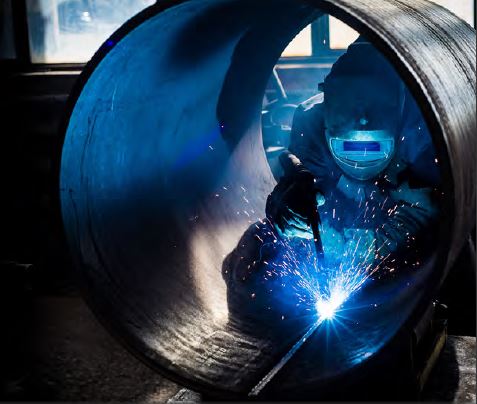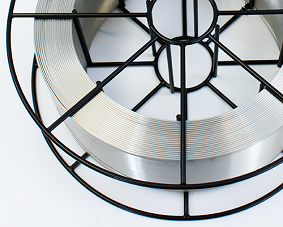CWI Generation4™ Welding Wires are designed for use in many different welding processes. The three most common types of welding used with our stainless steel and nickel welding alloys are Tungsten Inert Gas (TIG), Metal Inert Gas (MIG) and Submerged-Arc Welding (SAW). To ensure that you select the proper welding consumable alloy to work with your welding process, a brief description of each process is listed below. If you need further information on the specific welding parameters (Diameter, Voltage, Amperage, and Gas) recommended for each CWI Generation4 ™ Alloy, visit our recommended welding procedures page.




TUNGSTEN INERT GAS (TIG) WELDING
Auch bekannt als Gas-Wolfram-Lichtbogenschweißen (GTAW), TIG welding uses a tungsten electrode, a filler metal and an inert shielding gas (such as argon or helium) during the welding process. This method requires a highly skilled welder, as the manual technique requires two hands to utilize the equipment and apply the filler metal to create the weld joint. TIG welding is typically used with stainless steels and non-ferrous metals, on thinner section of metal, and provides the welder greater control over the properties of the weld versus other similar processes. It has the disadvantage of being relatively slow due to it’s complexity and multi part process.
METAL INERT GAS (MIG) WELDING
Auch bekannt als Gas-Metall-Lichtbogenschweißen (GMAW), the MIG welding process employs a welding gun, a power supply, an electrode (alloy wire) and a shielding gas. The welding procedure is uncomplicated, with the welding gun bringing all the required components (power, filler metal, shielding gas) together at the weld point. Compared to other methods, training for MIG welding requires less time to develop a usable skill level in the field. It is the preferred welding method in most industrial applications, and can be easily adapted to automation if required. Issues with dross and porosity of welds can affect the quality of the finished welds, so additional scrutiny of materials and cleanliness is required.
SUBMERGED ARC (SAW) WELDING
Oft angerufen Sub-Arc-Schweißenist das SAW-Schweißverfahren in erster Linie ein automatisiertes Schweißverfahren, das die Lichtbogenzone unterhalb (unter) der Oberfläche eines geschmolzenen Flussmittels isoliert und atmosphärische Verunreinigungen beseitigt. Das Verfahren verwendet eine kontinuierliche Zufuhr von verbrauchbarem Schweißdraht in entweder einer Einzel- oder Mehrfachdraht/Legierungs-Kombination. SAW hat den Vorteil einer hohen Auftragsrate und einer tiefen Schweißnahteindringung, was eine hohe Schweißrate in ft/min ermöglicht. Es ermöglicht auch einlagige Schweißnähte mit dickerem Material. SAW ist durch die Ebene des Schweißvorgangs begrenzt (gerade Schweißnähte werden bevorzugt) und kann dazu führen, dass ein zusätzlicher Schlackenentfernungsschritt erforderlich ist.
Drahtdurchmesser nach Schweißtyp
| MIG (GMAW) Durchmesser | WIG (GTAW) Durchmesser | SUB ARC (SAW) Durchmesser | |||
|---|---|---|---|---|---|
| Kaiserlich ein. | Metrisch mm | Kaiserlich ein. | Metrisch mm | Kaiserlich ein. | Metrisch mm |
| 0,023 | 0,6 | 1/16 | 1.6 | 5/64 | 2 |
| 0,030 | 0,8 | 32.3 | 2.4 | 32.3 | 2.4 |
| 0,035 | 0,9 | 1/8 | 3.2 | 1/8 | 3.2 |
| 0,045 | 1.14 | 5/32 | 4.0 | 5/32 | 4.0 |
| 0,047 | 1.2 | 3/16 | 4.8 | ||
| 1/16 | 1.6 | ||||

